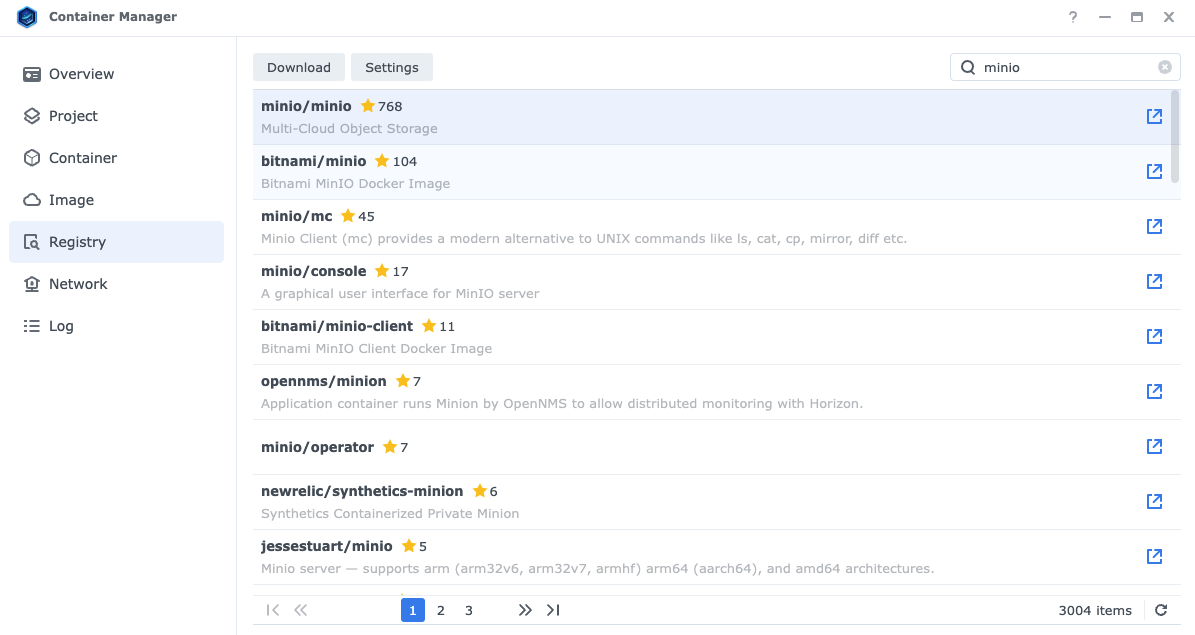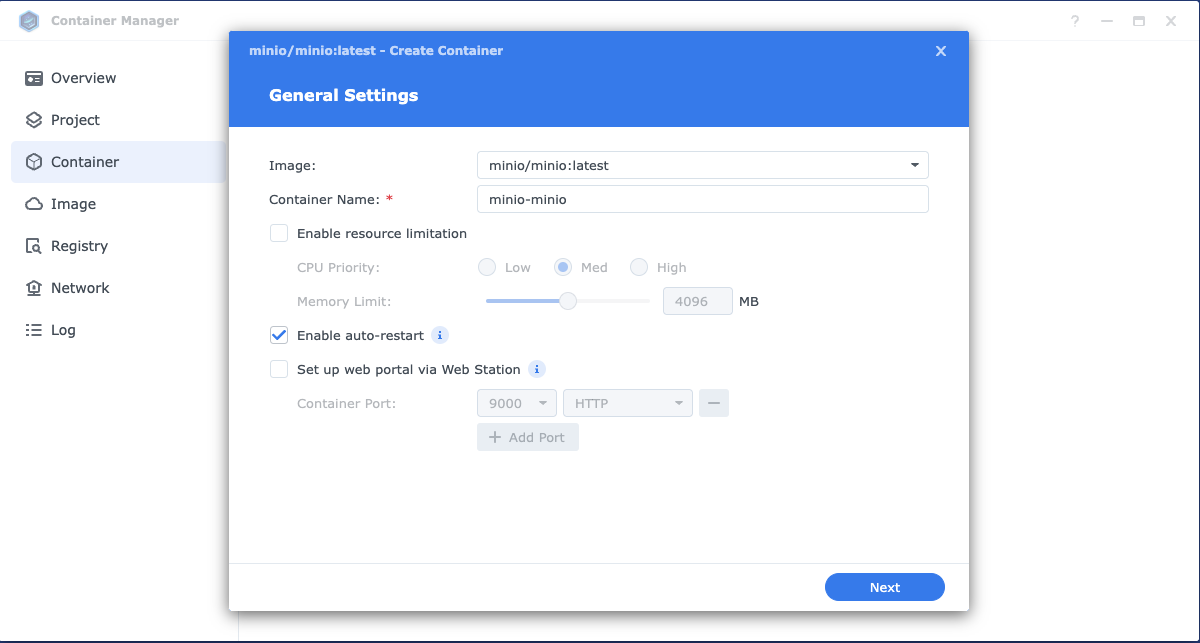Difference between revisions of "Cloud Connection"
Jump to navigation
Jump to search
| Line 4: | Line 4: | ||
* See list of [https://www.synology.com/en-uk/dsm/packages/ContainerManager Synology Applied Models] for '''Container Manager (Docker)'''. If your model is supported navigate to the Package Center and install '''Container Manager (Docker)''' app. | * See list of [https://www.synology.com/en-uk/dsm/packages/ContainerManager Synology Applied Models] for '''Container Manager (Docker)'''. If your model is supported navigate to the Package Center and install '''Container Manager (Docker)''' app. | ||
[[File:Container manager.png|center| | [[File:Container manager.png|center|frame]] | ||
*Open the '''Container Manager''' app and navigate to '''Registry'''. Search for <code>minio</code> and select '''minio/minio'''. Double click '''minio/minio''' and choose the '''latest''' build and download container image. | *Open the '''Container Manager''' app and navigate to '''Registry'''. Search for <code>minio</code> and select '''minio/minio'''. Double click '''minio/minio''' and choose the '''latest''' build and download container image. | ||
[[File:Docker Repository.png|center| | [[File:Docker Repository.png|center|frame]] | ||
* Deploy the image by giving it a '''name''' and selecting '''auto restart'''. | * Deploy the image by giving it a '''name''' and selecting '''auto-restart'''. | ||
[[File:Container name.png|center|frame]] | |||
*The container will use both ports 9000 and 9090 (TCP). Define that under '''Port Settings'''. | |||
[[File:Container-ports.png|center|frame]] | |||
*Create a folder in the <code>/docker</code> shared folder, or your own <code>/minio</code> shared folder and mount that under | * Create a '''folder''' with some name in the <code>/docker</code> shared folder, or your own <code>/minio</code> root shared folder and mount that under '''Volume Settings''' as <code>/data</code> | ||
* | |||
[[File:Container-volume.png|center|frame]] | |||
*Add two new '''Environment''' variables '''MINIO_ROOT_USER''' and '''MINIO_ROOT_PASSWORD'''. NOTE: The password and username will be logged, you should generate a long random string for this (further reading) | |||
* | * | ||
* You now have a MinIO S3 server. Verify it is running by selecting '''Container''' and checking the status. | * You now have a MinIO S3 server. Verify it is running by selecting '''Container''' and checking the status. | ||
Revision as of 20:09, 15 November 2023
Set Up an S3 Server on Synology NAS
Installing Container Manager and MinIO Server
- See list of Synology Applied Models for Container Manager (Docker). If your model is supported navigate to the Package Center and install Container Manager (Docker) app.
- Open the Container Manager app and navigate to Registry. Search for
minioand select minio/minio. Double click minio/minio and choose the latest build and download container image.
- Deploy the image by giving it a name and selecting auto-restart.
- The container will use both ports 9000 and 9090 (TCP). Define that under Port Settings.
- Create a folder with some name in the
/dockershared folder, or your own/minioroot shared folder and mount that under Volume Settings as/data
- Add two new Environment variables MINIO_ROOT_USER and MINIO_ROOT_PASSWORD. NOTE: The password and username will be logged, you should generate a long random string for this (further reading)
- You now have a MinIO S3 server. Verify it is running by selecting Container and checking the status.
Creating a Bucket
- Open a Browser and type in your NAS IP along with 9000 as the port (e.g.
10.0.0.30:9000) to access the Minio Object Store web page. - Enter the default username
minioadminand passwordminioadminto access the Object Store web page. - Choose Create a Bucket and enter the desired bucket name and click Create Bucket. Copy your bucket name and paste the information into a safe place (e.g., a notes app or word processing document) for later use.




